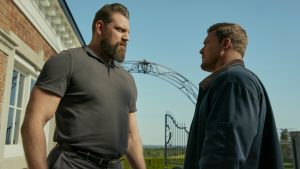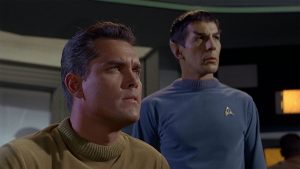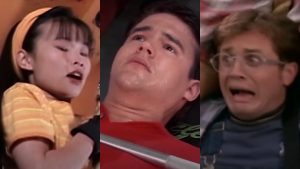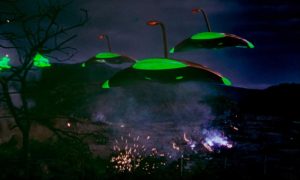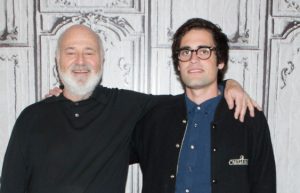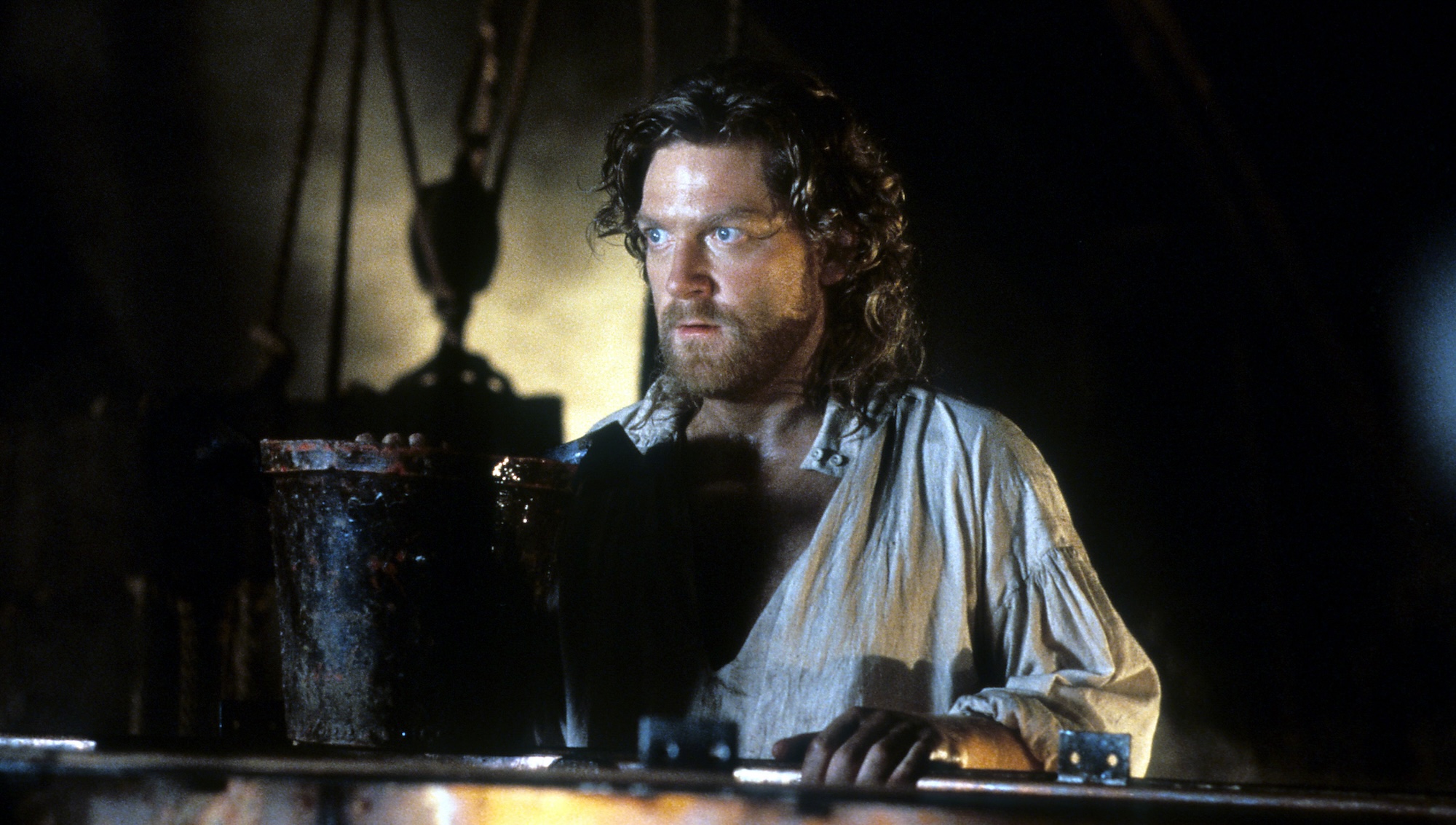
There has never been a fully faithful adaptation of the book Frankenstein. While that seminal 1818 novel is often credited with being the birth of science fiction, as well as one of the greatest works of Gothic literature ever penned, generally cinema’s popularization of the story has more to do with Universal Pictures and Boris Karloff under mountains of makeup than it does Mary Wollstonecraft Godwin (later Shelley). Conversely, the post-Enlightenment anxieties which she first dreamed up as a teenager on the shores of Lake Geneva have remained, as ever, on the page.
Yet one cinematic offering, at least, made a serious attempt at doing the book justice. And to be sure, Mary Shelley’s Frankenstein was a raging Kenneth Branagh spectacle when it came out 30 years ago today. Filled with literary pomp and theatrical bombast, it was also a movie rushed into production in order to capitalize on the success of Bram Stoker’s Dracula from two years earlier (a film that more rightly could have been titled Francis Ford Coppola’s Dracula). The 1994 Frankenstein retained Coppola as a hands-on, if frustrated, producer and was released by Sony Pictures’ TriStar Pictures acquisition, just as Sony’s Columbia had handled the distribution of Dracula and many other of the early 1990s’ splashy retellings of iconic 19th and early 20th century novels. Think The Age of Innocence (1993) and Little Women (1994).
In theory, Mary Shelley’s Frankenstein was meant to fit snugly beside those efforts and other trendy lunges toward literary prestige in the industry. In fact, after Coppola elected to not direct Mary Shelley’s Frankenstein, he still got the new Shakespeare wunderkind Kenneth Branagh to helm, fresh off Much Ado About Nothing (1993), and convinced the younger filmmaker to cast Coppola’s first choice for Frankenstein’s Monster, Robert De Niro. The expectations were then raised further when Helena Bonham Carter, the unofficial face of Merchant Ivory films like A Room with a View (1985) and Howards End (1992), signed on to co-star as Elizabeth Frankenstein, the cousin of main character Victor, and his eventual doomed wife.
All of these ingredients, plus the largely untapped appeal of Mary Shelley’s novel, should have produced a film at least as alluring and unforgettable as Coppola’s Dracula, which love it or hate it has stood the test of time 32 years on. And in principle, Branagh’s Frankenstein hews closer to its source material than Coppola’s vampire bacchanal ever did.
By contrast, most Frankenstein adaptations before Branagh elected to take the core idea of Mary’s unsettling dream: a scientist is driven to madness by his desire to conquer death and reanimate a corpse built from various cadavers. However, little else from the novel ever makes it to the screen. In the most famous version of the story, the aforementioned Karloff movie directed by James Whale, even the name of the scientist is wrong with Victor Frankenstein being rechristened “Henry Frankenstein,” supposedly because a producer at Universal thought “Victor” sounded too German after World War I.
Meanwhile the second most famous cycle of Frankenstein movies, those produced by Britain’s Hammer Films during the 1950s and ‘60s, drifted even further afield from Shelley. Whereas Karloff’s monster was at least an innocent like his literary counterpart is introduced to be, the various creatures who would show up across Hammer’s many sequels were interchangeable in their facial grotesqueries and vacant stupidities. They were props used by those movies’ Victor Frankenstein (Peter Cushing), who while enjoying the same name as the book’s character was here less of a misguided seeker of knowledge and more of a vain sadist who dabbled in megalomania and rape.
It was from this haphazard tradition that Branagh sought to do better, working from a screenplay he personally tinkered with, but which was originally penned by Steph Lady and The Shawshank Redemption director Frank Darabont (the latter of whom accused Branagh of ruining his script). And in those pages was a faithful understanding of Victor Frankenstein, the young and eager medical student living in 18th century Switzerland.
By that detail alone, Mary Shelley’s Frankenstein stands out as one of the few adaptations to get the setting and time period right, with the novel largely acting as a flashback given by a dying Victor as he recalls his youthful folly during the glorious Enlightenment era that the real-life Mary Wollstonecraft Godwin grew up idolizing. After all, the author’s father was Enlightenment philosopher William Godwin and her mother the women’s rights leader, Mary Wollstonecraft.
Branagh even copies the framing device of Mary’s novel, with the story beginning near the arctic circle in the 1810s when a sea captain determined to discover the North Pole finds his ship grounded to a halt in the ice where a strange hulking man is being pursued by the half-dead and aged Victor across frozen waste.
From there, Mary Shelley’s Frankenstein repeats many of the plot points of the novel, complete with Victor being partially inspired to discover the secrets of life and death after sympathetically losing his mother, only to be disgusted by the Creature he gives birth to, abandoning it to the elements after it opens its yellow eyes. Alas for Victor, it does not die. Instead it grows wise of the world and bitter that it was abandoned to man’s cruelties and prejudices due to an unseemly appearance… a resentment that turns deadly when the Monster murders Victor’s young brother and frames a beloved servant/nanny in the Frankenstein household for the deed.
After she is unjustly hanged, the Creature and Victor enter into a series of escalating tete-a-tetes, with the Creature demanding Victor build him a mate who would never leave him. At first, Victor agrees but then reneges. Eventually, the Monster murders Victor’s bride on their wedding night, beloved cousin Elizabeth, setting off an eternal rivalry that takes them all the way to the North Pole.
It is an epic story, and one that is less about man dabbling in forbidden knowledge or God’s province—which is often the takeaway from its successors, be it Universal’s Karloff movies or Jurassic Park—and more about a parent’s responsibility to a child. Or a man’s to his family. For what is Victor but an absentee father who walks out on his newborn babe? His heir might even have had the capacity for love, as we saw this unnamed wretch come to dote on a family in the wilderness. And from these kindly folks, he learns philosophy and how to read Paradise Lost… or at least that is what happens in Shelley’s novel, which is preoccupied with comparing the Creature to a combination of John Milton’s Adam and Lucifer, creatures of God who succumb to sin and temptation when not properly cared for by their Creator.
Whereas most movies view Frankenstein as a cautionary tale about the dangers of science, and even Shelley originally titled it The Modern Prometheus, the literary Frankenstein is more about a scientist taking responsibility for their creation, as a father should a son. However, if you have only seen the Frankenstein movies, including the one titled Mary Shelley’s Frankenstein, you might be forgiven for missing this distinction, because truthfully the film acts as a cautionary tale in its own right: first it offers a lesson in the limits of faithfully adapting a novel, and secondly it proves once again that being true to the letter of a novel does not mean you capture its spirit.
Almost every plot point mentioned above occurs in Branagh’s film, which is recreated with gorgeous 18th century period costumes and expensive looking sets. However, the film is never so much preoccupied with the depths of the book as it is in the spectacle that its tale provides.
By dubiously casting himself at 34 as a fresh-faced medical student, Branagh turns Frankenstein into a vanity project where the film is less about the Monster’s abandonment than it is Victor’s genius, and arguably Branagh’s perception of his own as well. The film fetishizes Branagh’s shirtless physique in the several resurrection scenes, with the metaphor of creating life taking on the garish pointedness of high school graffiti since Victor’s machine in the film amounts to a giant penis and testicles which fill its creation with life a life-giving energy that leaves De Niro and Branagh drenched in amniotic fluid.
The whole film is equally as heavy-handed with the camera whirling around Branagh, Carter, and supporting player Tom Hulce. While spinning dolly shots can be intoxicating when selectively used—scenes of high romance between Victor and Elizabeth indeed achieve a swooning quality—the aesthetic is utilized in every single scene of the film not involving the Monster, whether the characters are at a party or crying over the body of a dead child. Over time it becomes obnoxious, and finally exhausting.
This matches the heightened melodramatic excess which Branagh keeps all his players at for nearly every scene, which gives the film more of a histrionic breathlessness than it does anything approaching grand opera. And on some level, Branagh might be aware of this since the camp elements are kept to a minimum during the best sequence of the film, which like the novel is just about a Monster trying to make his way in the world.
The scenes of De Niro’s Creature (or “Sharply Featured Man” as he’s credited as in the cast bill) hiding in the crawl spaces of an impoverished family’s hovel and learning alongside children how to read from a kindly grandfather (Richard Briers) is the highlight of the movie. It’s at this point in the book that Frankenstein becomes actually the tragedy of the scientist’s creation, rather than the scientist’s own personal woes.
Yet the film never quite makes that leap, with De Niro’s Monster remaining secondary to Branagh’s vision of Victor as a mythic hero. Furthermore, the film is likewise still beholden to Universal Pictures and the decades of imitators that came afterward. De Niro’s Creature is never allowed to reach the philosophical awareness and Byronic heft of Shelley’s literary Creature. The film presupposes that audiences simply will not accept a Monster as loquacious and soulful as Shelley’s. Instead it maintains Karloff’s facial scars and faltering line delivery from Bride of Frankenstein (1935).
Even after making such a conscious effort to break away from a century of Hollywood tradition, Mary Shelley’s Frankenstein remains trapped by it. This includes the film ultimately fumbling its one brilliant innovation from the book: after the Creature murders Elizabeth, Victor decides in the film to resurrect her body hours later. But the Elizabeth who returns to him from death is not the same, and the trauma leads her to destroy herself all over again. It is conceptually a brilliant addition, but Branagh’s film is still too interested in one-upping the gnarly body horror of Hammer Horror, and in its focus on Victor’s own pain as he fights over the reborn Elizabeth with his Creature, as opposed to that of the woman caught in the middle.
It becomes a kind of trashy and maudlin replay of Whale’s ingenious Bride of Frankenstein, despite Branagh’s film theoretically giving more agency to “the Bride” than Whale ever did.
That, ultimately, might be the great paradox and problem with adapting Frankenstein. As far as pop culture is concerned, the definitive telling of this story is not an early 19th century nightmare dreamed up by a teenager on a dark and stormy night; it’s a black and white talkie with iconic makeup. And getting away from that legacy remains an almost insurmountable problem.
Perhaps it should be. While Whale’s two films with Karloff more or less disregard Shelley’s novel wholeheartedly, and even misinterpret its understanding of the direction of science in a way more befitting middle American morality in the early 20th century, it still captures the true essence of the book: the Creature is an innocent who could be happy playing with a child by a lake, or drinking wine with a blind hermit, if the world would simply give him a chance.
How Karloff’s Creature is drawn and presented could never be mistaken for Milton’s Adam. But he also could never be mistaken for Robert De Niro in a movie woefully wasting his talents as an arch heavy. In that way, they both represent the paradox of a faithful adaptation, and how a film that bears almost no similarities to its source material’s letters can be far closer to its spirit than the one emblazoning the author’s name above the title.
The post Mary Shelley’s Frankenstein and the Paradox of Faithful Adaptations appeared first on Den of Geek.
